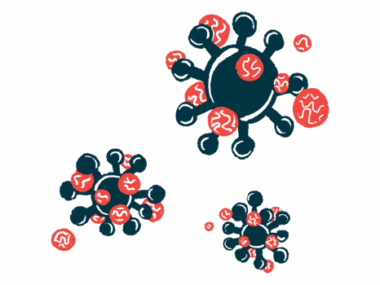Severe COVID-19 Suspected as Trigger of aHUS in 3-year-old Girl
Written by |

COVID-19 appears to have triggered an exaggerated immune response in a toddler, leading to the development of atypical hemolytic uremic syndrome (aHUS) in the absence of disease-relevant mutations, scientists reported.
“This is a rare case report of a child with COVID-19 developing HUS. Since HUS developed following a COVID-19 infection, it is likely that COVID-19 was an infectious trigger for this patient’s condition,” the researchers wrote.
The report, “Thrombotic Microangiopathy in a Severe Pediatric Case of COVID-19,” was published in the journal Clinical Medicine Insights: Pediatrics.
aHUS is a rare disease characterized by hemolytic anemia or red blood cell destruction, low platelet counts, and kidney failure. It belongs to a larger group of disorders, called thrombotic microangiopathies (TMAs), which are characterized by the formation of blood clots in small blood vessels, leading to organ damage.
This condition is caused by a dysfunctional complement cascade, a part of the immune system responsible for defending the body against microbes. When overactive, the complement system can cause severe inflammation and blood clotting.
In aHUS, infections can trigger an uncontrolled reaction from the complement system, but mostly in people with mutations in the genes that control the function of the complement cascade.
A group of researchers in Turkey reported on a 3-year-old girl whose aHUS appeared to be triggered by infection with the virus that causes COVID-19.
The girl was admitted to a hospital’s intensive care unit with fever, breathing difficulties, a low level of consciousness, and high blood pressure. She had no known previous illnesses, but there was a family history of consanguinity (parents who are related by blood, such as cousins), and of early deaths: an older sibling died at age 7 months of fever, and a cousin at about 18 months old of unknown causes.
She initially tested negative for COVID-19, and was started on antibiotics to treat her chest infection. However, a second COVID-19 test came back positive seven days later. She began treatment with favipiravir, an antiviral therapy, and hydroxychloroquine, a medication typically prescribed for malaria, and autoimmune disorders like rheumatoid arthritis, and systemic lupus erythematosus.
Still, her health continued to worsen and she was put on mechanical ventilation.
Lab tests showed low hemoglobin levels (6.5 g/dL; normal range: 11.5–13.5 g/dL), normal white blood cell counts (16,160 cells per cubic millimeter [mm3]; normal range: 6,200–17,500 cells/mm3), and high platelet counts (503,000 platelets/mm3; normal range: 150,000–450,000 platelets/mm3). Of note, hemoglobin is the protein in red blood cells responsible for oxygen transport.
A CT scan revealed the girl had a buildup of fluid between the membranes that line the outside the lungs, and sections of her lungs had collapsed. On the 10th day of hospitalization, her kidneys shut down, and her platelet counts dropped to 29,000 platelets/mm3.
Further testing revealed the presence of red blood cell fragments (schistocytes); high levels of lactate dehydrogenase (LDH), a marker of tissue damage; and undetectable haptoglobin, an indicator of red blood cell destruction. She also had a higher-than-normal number of immature blood cells — a condition known as reticulocytosis, which is also a hallmark feature of hemolytic anemia. Overall, observations pointed to TMA likely triggered by COVID-19.
All these “findings confirmed the diagnosis of HUS,” the researchers wrote.
Researchers ruled out thrombotic thrombocytopenic purpura (TTP), another TMA, by examining ADAMTS13 activity levels. (TTP is caused by the lack of ADAMTS13, an enzyme involved in blood clotting, and in this patient its activity levels were normal.)
After treatment with plasmapheresis (plasma exchange therapy) — a procedure in which a patient’s plasma, the liquid portion of blood, is removed and replaced — her symptoms and clinical manifestations began to ease. Her kidney function was restored and her blood parameters, including hemoglobin, platelets, and LDH, reached normal levels after four weeks.
Genetic testing detected no mutations associated with aHUS. Nevertheless, given her young age and family history, the scientists suggested this was a case of aHUS triggered by COVID-19.
“COVID-19 induced uncontrolled complement activation leading to the development of aHUS. Early diagnosis and treatment may reduce morbidity and mortality,” the researchers wrote.






